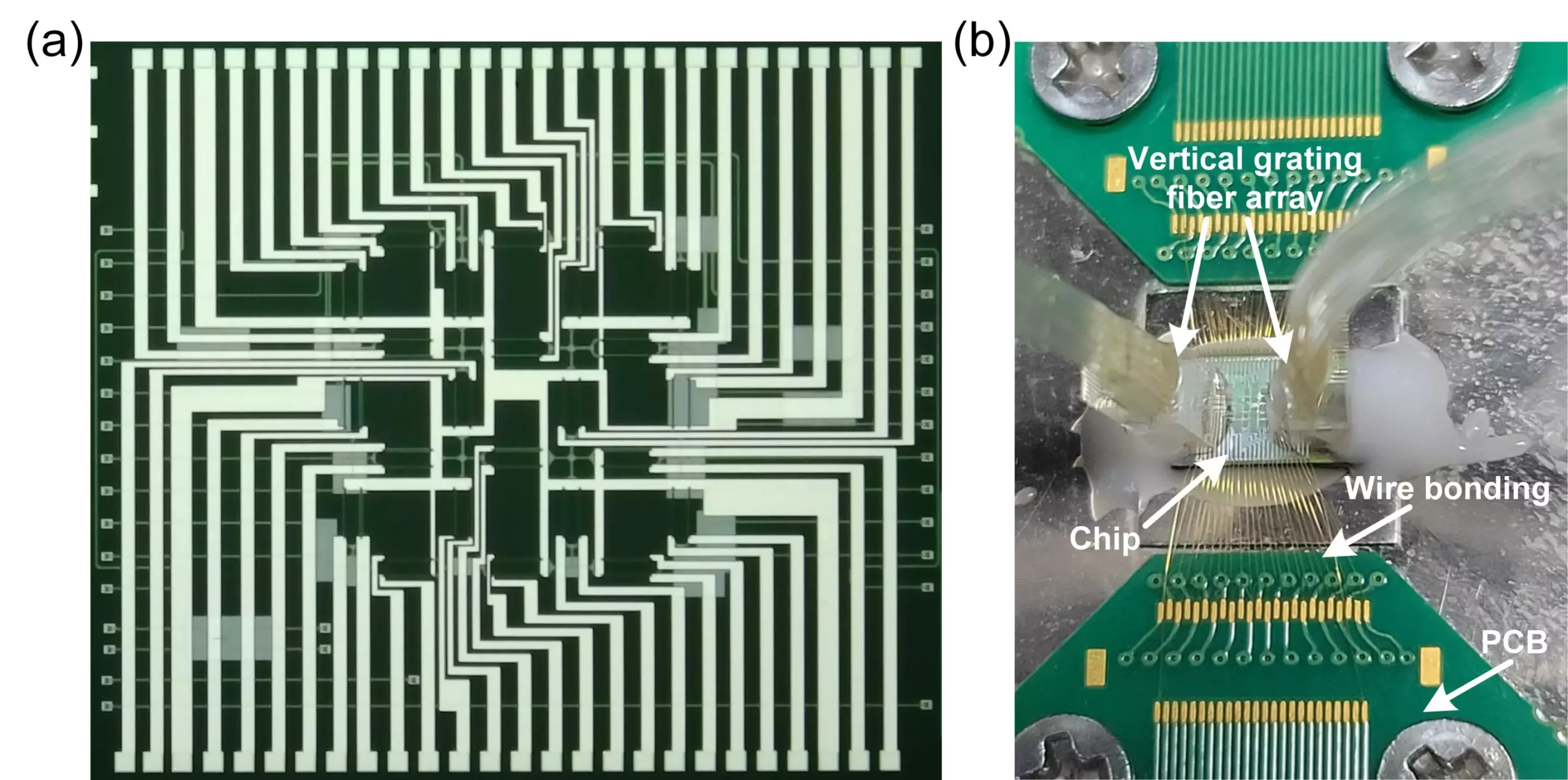Researchers at Huazhong University of Science and Technology in China have developed an innovative optical chip that has the potential to revolutionize various data-heavy tasks. This chip can configure itself to perform different functions and is particularly useful for optical neural networks, which are essential for tasks like image classification, gesture interpretation, and speech recognition. Unlike previous photonic integrated circuits, this chip does not require users to understand its internal structure, making it much easier to use.
The optical chip developed by the researchers is based on a network of waveguide-based optical components known as Mach-Zehnder interferometers (MZIs). These MZIs are arranged in a quadrilateral pattern, allowing the chip to self-configure for optical routing, low-loss light energy splitting, and matrix computations used in neural networks. By adjusting the voltages of electrodes integrated into the chip, users can create various light propagation paths in the quadrilateral network, effectively reconfiguring the chip.
One significant advantage of this new optical chip is its ease of use. Users do not need to have a deep understanding of the chip’s internal structure or manually adjust its basic units. Instead, they simply set a training objective, and with computer control, the chip self-configures to achieve the desired functionality based on the input and output. This “black box” approach makes the chip much more user-friendly and accessible.
The researchers believe that their chip has enormous potential for applications involving optical neural networks, which are networks of interconnected nodes. In order to use an optical neural network effectively, the network must be trained with known data to determine the weights between each pair of nodes, a task that involves matrix multiplication. The new chip’s ability to perform matrix operations in an MZI topological network structure allows for both feedforward and feedbackward propagation, making it well-suited for optical neural networks.
Fast Training Process
To accelerate the convergence rate of the training process, the researchers integrated a gradient descent algorithm into the chip. This algorithm adjusts the voltages of all the adjustable electrodes at once, rather than a single variable, which improves the convergence rate of the cost function. As a result, the training process becomes faster and more efficient.
Demonstrated Capabilities
The researchers successfully demonstrated the chip’s capabilities in positive real matrix computation, optical routing, and low-loss optical power splitting. Positive real matrix computation involves verifying the feasibility of matrix operations in a quadrilateral MZI network, and the chip achieved minimal error between its training results and the target matrices. Optical routing, which efficiently routes optical signals between equipment in data centers, was also showcased with a high extinction ratio. Lastly, the chip successfully performed low-loss optical energy splitting, allowing signals to be sent to different components on the chip simultaneously.
Future Improvements and Applications
The researchers are currently working on further improvements to the chip to enhance its matrix operation capabilities. They are also exploring other potential applications for matrix computing beyond optical neural networks. With additional development, this chip could potentially achieve optical functions comparable to electrical integrated circuits that can be reprogrammed, further expanding its usefulness and versatility.
The development of an optical chip that can configure itself to achieve various functions is a significant breakthrough in the field of optics. Its ease of use and ability to perform matrix operations and optical routing make it highly promising for applications such as image classification, gesture interpretation, and speech recognition. As researchers continue to refine and improve this chip, it has the potential to revolutionize optical neural networks and other fields that require complex data processing and analysis.


Leave a Reply